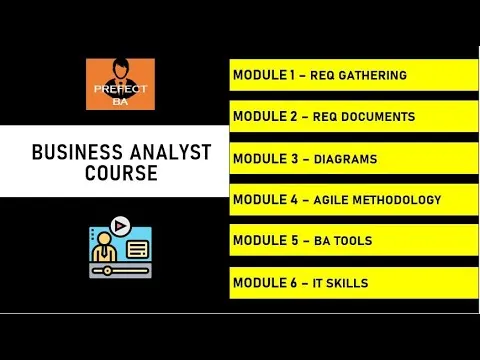
High-Dimensional Data Analysis 
This course provides an introduction to the analysis of high-dimensional data. Topics covered include mathematical distance, dimension reduction, singular value decomposition and principal component analysis, multiple dimensional scaling plots, factor analysis, dealing with batch effects, clustering, heatmaps, and basic machine learning concepts. Students will learn how to use these techniques to explore and analyze high-dimensional data sets. The course will also cover the use of visualization techniques to interpret the results of the analysis. ▼
ADVERTISEMENT
Course Feature
![]() Cost:
Cost:
Free
![]() Provider:
Provider:
Edx
![]() Certificate:
Certificate:
No Information
![]() Language:
Language:
English
![]() Start Date:
Start Date:
Self Paced
Course Overview
❗The content presented here is sourced directly from Edx platform. For comprehensive course details, including enrollment information, simply click on the 'Go to class' link on our website.
Updated in [May 17th, 2023]
This course provides an introduction to high-dimensional data analysis. Students will learn about mathematical distance, dimension reduction, singular value decomposition and principal component analysis, multiple dimensional scaling plots, factor analysis, dealing with batch effects, clustering, heatmaps, and basic machine learning concepts. By the end of the course, students will have a better understanding of how to analyze high-dimensional data.
[Applications]
After completing this course, participants should be able to apply the concepts learned to their own data sets. They should be able to use mathematical distance to measure the similarity between data points, reduce the dimensionality of their data sets, use singular value decomposition and principal component analysis to identify important features, create multiple dimensional scaling plots to visualize data, use factor analysis to identify underlying patterns, deal with batch effects, cluster data points, create heatmaps, and understand basic machine learning concepts.
[Career Paths]
1. Data Scientist: Data Scientists are responsible for analyzing large datasets to uncover trends and patterns. They use a variety of techniques, such as machine learning, statistical analysis, and data mining, to identify insights and develop predictive models. Data Scientists are in high demand as organizations increasingly rely on data-driven decision making.
2. Machine Learning Engineer: Machine Learning Engineers are responsible for developing and deploying machine learning models. They use a variety of techniques, such as supervised and unsupervised learning, to create models that can be used to make predictions and automate tasks. Machine Learning Engineers are in high demand as organizations increasingly rely on automated solutions.
3. Business Intelligence Analyst: Business Intelligence Analysts are responsible for analyzing data to identify trends and insights. They use a variety of techniques, such as data visualization, statistical analysis, and predictive modeling, to uncover insights and inform decision making. Business Intelligence Analysts are in high demand as organizations increasingly rely on data-driven decision making.
4. Data Visualization Specialist: Data Visualization Specialists are responsible for creating visual representations of data. They use a variety of techniques, such as heatmaps, scatter plots, and bar charts, to create visualizations that can be used to identify trends and insights. Data Visualization Specialists are in high demand as organizations increasingly rely on data-driven decision making.
[Education Paths]
1. Data Science: Data Science is a rapidly growing field that combines mathematics, statistics, computer science, and domain expertise to extract insights from large datasets. It involves the use of techniques such as data mining, machine learning, and predictive analytics to analyze and interpret data. Data Science is becoming increasingly important in many industries, such as healthcare, finance, and retail.
2. Artificial Intelligence: Artificial Intelligence (AI) is a field of computer science that focuses on creating intelligent machines that can think and act like humans. AI is used to solve complex problems and automate tasks that would otherwise be too difficult or time-consuming for humans to do. AI is becoming increasingly important in many industries, such as healthcare, finance, and retail.
3. Machine Learning: Machine Learning is a subset of Artificial Intelligence that focuses on developing algorithms that can learn from data and make predictions. It involves the use of techniques such as supervised learning, unsupervised learning, and reinforcement learning to analyze and interpret data. Machine Learning is becoming increasingly important in many industries, such as healthcare, finance, and retail.
4. Statistics: Statistics is a field of mathematics that focuses on the collection, analysis, and interpretation of data. It involves the use of techniques such as descriptive statistics, inferential statistics, and predictive analytics to analyze and interpret data. Statistics is becoming increasingly important in many industries, such as healthcare, finance, and retail.
Course Provider

Provider Edx's Stats at AZClass
Discussion and Reviews
0.0 (Based on 0 reviews)
Explore Similar Online Courses

Basic Arithmetic

Build Your Own SAP Fiori App in the Cloud

Python for Informatics: Exploring Information

Social Network Analysis

Introduction to Systematic Review and Meta-Analysis

The Analytics Edge

DCO042 - Python For Informatics

Causal Diagrams: Draw Your Assumptions Before Your Conclusions

Whole genome sequencing of bacterial genomes - tools and applications

Business Analyst Full Course In 2 Hours Business Analyst Training For Beginners Simplilearn

Business Analyst Training for Beginners Business Analysis Tutorial Invensis Learning


Start your review of High-Dimensional Data Analysis